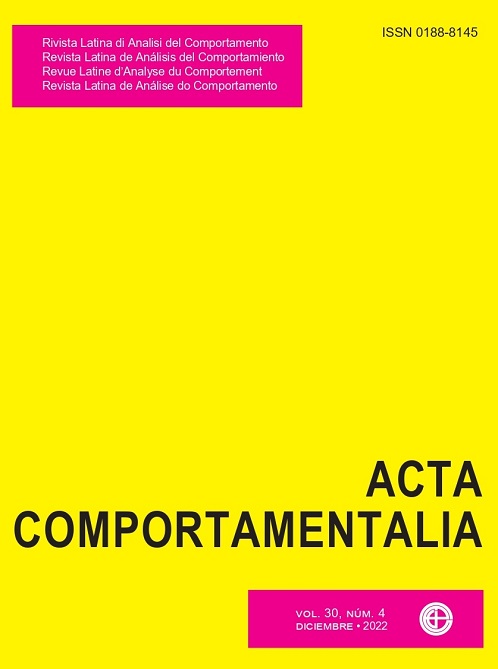Reinforcement magnitude and its correlation with responding on “reinforcement accumulation”
Main Article Content
Abstract
Gradually lengthening the response-reinforcement interval results in a gradual decrease in response frequency or decreasing delay gradient. While this occurs when a single reinforcement follows the delay, a procedure known as “reinforcer accumulation” results in an increasing delay-gradient. The latter phenomenon occurs when the number of reinforcements after the delay match the number of responses. These contradictory outcomes may be due to either, the response reinforcement Correlation or the larger magnitude of reinforcement, both present in the latter procedure but not in the former. All rats were given a 20 s opportunity to press a retractable lever, followed by delays of 0, 2, 4, 8, 16 and 32 s that ended in reinforcement. A 7 by 2 factorial design was used with reinforcement magnitude as a between subjects´ factor (1, 3, 5, 8, 13, 21 and 34 pellets) and Correlation as a within subject factor (Correlation or No-Correlation). As magnitude of reinforcement increased the tilt of the gradients changed from decreasing to flat to
increasing. The Correlation vs. No-Correlation factor yielded semi-parallel functions with response frequencies slightly higher for correlation. It was concluded that reinforcement magnitude combined with delay of reinforcement determines the tilt of the delay-gradients.
Article Details
Citas en Dimensions Service

<a rel="license" href="http://creativecommons.org/licenses/by-nc-sa/4.0/"><img alt="Licencia de Creative Commons" style="border-width:0" src="https://i.creativecommons.org/l/by-nc-sa/4.0/88x31.png" /></a><br />Este obra está bajo una <a rel="license" href="http://creativecommons.org/licenses/by-nc-sa/4.0/">licencia de Creative Commons Reconocimiento-NoComercial-CompartirIgual 4.0 Internacional</a>.
